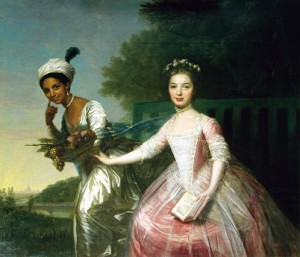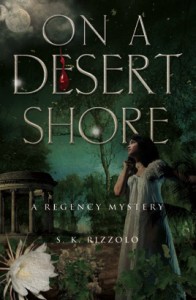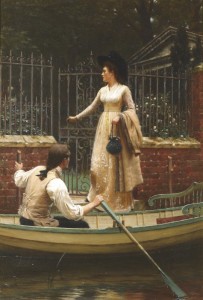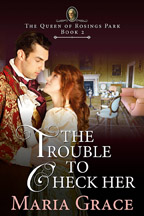 Relevant History welcomes historical mystery author S. K. Rizzolo, who earned an MA in literature before becoming a high school English teacher and author. Her Regency mystery series features a trio of crime-solving friends: a Bow Street Runner, an unconventional lady, and a melancholic barrister. On a Desert Shore is the fourth title in the series following The Rose in the Wheel, Blood for Blood, and Die I Will Not. Rizzolo lives in Los Angeles. To learn more about her and her books, visit her web page, and follow her on Facebook, Goodreads, and Google+.
Relevant History welcomes historical mystery author S. K. Rizzolo, who earned an MA in literature before becoming a high school English teacher and author. Her Regency mystery series features a trio of crime-solving friends: a Bow Street Runner, an unconventional lady, and a melancholic barrister. On a Desert Shore is the fourth title in the series following The Rose in the Wheel, Blood for Blood, and Die I Will Not. Rizzolo lives in Los Angeles. To learn more about her and her books, visit her web page, and follow her on Facebook, Goodreads, and Google+.
*****
Readers of Georgette Heyer’s Regency novels are familiar with her references to skin care products such as Denmark Lotion or Olympian Dew. A young lady’s fair and blooming complexion could be almost as critical to her success as her dowry and social position. Then, as now, those with unsightly spots sought to avoid embarrassment. But the ideal of complexion went much deeper than that. It was, in fact, tied to anxieties about Britain’s Empire, notions of proper Englishness, and the desire to maintain boundaries of class and race.
In my novel On a Desert Shore, Marina Garrod receives every advantage of the privileged young lady. Rumored to be the heiress to vast wealth, she debuts in Society with the hope of making an eligible alliance. But to bigoted eyes, there’s a problem. All her father’s money cannot make her into a genuine “English Rose” (pink cheeks and red lips with pale skin)—for Marina is the daughter of a Jamaican planter and his slave-housekeeper. My novel is about Marina’s plight in the England of 1813, a time when attitudes toward race were hardening, in part because of growing fears of cultural and racial contamination./p>
A Rose By Any Other Complexion…
Marina’s experience as a mixed-race heiress in Georgian England was not unique. In his dissertation Children of Uncertain Fortune: Mixed Race Migration from the West Indies to Britain, 1750-1820, Dan Livesay estimates that, by the end of the 18th century, as many as a quarter of rich Jamaicans with children of color sent them home to England to live in a free society. On the whole these children were the lucky ones who had escaped the astoundingly brutal and oppressive sugar island. Still, families sometimes challenged the inheritances of their mixed-race kin, and the position of these young people would have been equivocal at best. It’s difficult to imagine how they might have felt. While Britain had halted its participation in the slave trade in 1807, slavery itself endured for several more decades in the colonies. Apologists for the institution like Marina’s father failed to justify a practice that was increasingly seen, according to the poet Samuel Taylor Coleridge, as “blotched all over with one leprosy of evil.” Here Coleridge refers to the arguments of West India merchants and slave owners, calling them “cosmetics” designed to conceal a horrible reality.
Deirdre Coleman asserts that the British public of the day had a “fascination with complexion.” And my research revealed that this was especially true of white Creole women (Creole is an ambiguous term that sometimes meant the Blacks of Jamaica and sometimes a person of any race who had spent a lot of time there). I encountered stories of the white Creole women’s attempts to preserve their complexions so that when they returned to England they could bloom into legitimate English roses. They wore elaborate sunshades and even flayed their skin with the caustic oil of the cashew nut! Often they created what even some contemporaries called an artificial and unhealthy pallor.
Why such rigid standards of beauty? This was a society in which all-powerful white men exploited black women at their own whim and will, a society in which wives were often confronted with the humiliating results of open infidelity—their husbands’ slave children. It was important to the Creole ladies, whose skin could become tanned or weathered in the tropical climate, to maintain strict boundaries through their complexions. In other words, “whiteness” as a marker of status and breeding. But, ironically in this racially mixed society, it might not be possible to determine someone’s precise background just by looking. There might have been little visible difference between a Creole lady and her husband’s mulatta or quadroon concubine.
Performing Gentility
When a woman named Janet Schaw traveled to North America and the West Indies between 1774–76, she wrote in her diary about putting on and off her delicacy “like any piece of dress.” To me, this points to the performative aspect of femininity. A woman can don a mask of beauty and gentility to further her ends or play her role in society. This is precisely what Marina cannot do to her tormenters’ satisfaction. And yet she is not afraid to express her fellow feeling with African slaves or her contempt for slavery. You will have to read the book to find out what happens after her failed London season. In essence, she is shipwrecked “on a desert shore” in an alien land, even though she is half English and has been mostly reared in England. She is no true English rose.
 Here’s the famous portrait of Dido Elizabeth Belle and her cousin Lady Elizabeth Murray. Belle was the daughter of an enslaved African woman and Sir John Lindsay, a British naval officer. After Lindsay brought his daughter to England, she lived with the Earl of Mansfield, the Lord Chief Justice, at Kenwood House in Hampstead. Much speculation has arisen in regard to this portrait, whose artist is uncertain. Why does Belle point at her own cheek in a curiously awkward gesture? Perhaps she calls attention to her contrasting complexion in order to suggest that any difference is only “skin deep.”
Here’s the famous portrait of Dido Elizabeth Belle and her cousin Lady Elizabeth Murray. Belle was the daughter of an enslaved African woman and Sir John Lindsay, a British naval officer. After Lindsay brought his daughter to England, she lived with the Earl of Mansfield, the Lord Chief Justice, at Kenwood House in Hampstead. Much speculation has arisen in regard to this portrait, whose artist is uncertain. Why does Belle point at her own cheek in a curiously awkward gesture? Perhaps she calls attention to her contrasting complexion in order to suggest that any difference is only “skin deep.”
There’s an unforgettable scene in another novel, an anonymous abolitionist work of 1808 called The Woman of Colour, which introduces Olivia Fairfield, the natural daughter of a West Indian planter and a slave. Like Marina Garrod, Olivia travels to England. In the scene a curious little boy at a tea party compares his hand to Olivia’s, interrogating her about her skin color. Her response: “The same God that made you made me…[as well as my servant Dido, a] poor black woman—the whole world—and every creature in it! A great part of this world is peopled by creatures with skins as black as Dido’s, and as yellow as mine…”
Which leaves us with one of my favorite Shakespearean sonnets, a satiric poem making the point that, after all, what we deem beauty has nothing to do with outward show. After criticizing his beloved for her varied imperfections, including the lack of “roses” in her cheeks, the speaker says: “And yet, by heaven, I think my love as rare / As any she belied with false compare.”
*****
 A big thanks to S. K. Rizzolo. She’ll give away a copy of On a Desert Shore to someone who contributes a comment on my blog this week. I’ll choose the winner from among those who comment by Friday at 6 p.m. ET. Delivery is available worldwide for an ebook and in the U.S., Canada, and Europe for a hardcover.
A big thanks to S. K. Rizzolo. She’ll give away a copy of On a Desert Shore to someone who contributes a comment on my blog this week. I’ll choose the winner from among those who comment by Friday at 6 p.m. ET. Delivery is available worldwide for an ebook and in the U.S., Canada, and Europe for a hardcover.
**********
Did you like what you read? Learn about downloads, discounts, and special offers from Relevant History authors and Suzanne Adair. Subscribe to Suzanne’s free newsletter.

 Relevant History welcomes Regency romance author Maria Grace, who has her PhD in Educational Psychology and is a sixteen-year veteran of the university classroom, where she taught courses in human growth and development, learning, test development and counseling. None of which have anything to do with her undergraduate studies in economics/sociology/managerial studies/behavior sciences. She blogs at
Relevant History welcomes Regency romance author Maria Grace, who has her PhD in Educational Psychology and is a sixteen-year veteran of the university classroom, where she taught courses in human growth and development, learning, test development and counseling. None of which have anything to do with her undergraduate studies in economics/sociology/managerial studies/behavior sciences. She blogs at  A couple eloping to Grenta Green is a fairly common plot device for romances set in the early 1800s. But why was it done (other than because it sounds really romantic), and what cheaper, easier alternatives were at hand for a couple inclined to elope?
A couple eloping to Grenta Green is a fairly common plot device for romances set in the early 1800s. But why was it done (other than because it sounds really romantic), and what cheaper, easier alternatives were at hand for a couple inclined to elope? Gretna Green is three hundred twenty miles from London, the largest British population center of the early 1800s. My local highways boast an 80 or 85 mile-per-hour speed limit, so I can travel that distance in half a day, no bother. In the early 1800s those speeds were unheard of. Most people walked. Everywhere. Only the very wealthy had horses and carriages of their own.
Gretna Green is three hundred twenty miles from London, the largest British population center of the early 1800s. My local highways boast an 80 or 85 mile-per-hour speed limit, so I can travel that distance in half a day, no bother. In the early 1800s those speeds were unheard of. Most people walked. Everywhere. Only the very wealthy had horses and carriages of their own. A big thanks to Maria Grace. She’ll give away an ebook copy of The Trouble to Check Her to two people who contribute comments on my blog this week. I’ll choose the winners from among those who comment by Friday at 6 p.m. ET.
A big thanks to Maria Grace. She’ll give away an ebook copy of The Trouble to Check Her to two people who contribute comments on my blog this week. I’ll choose the winners from among those who comment by Friday at 6 p.m. ET.

